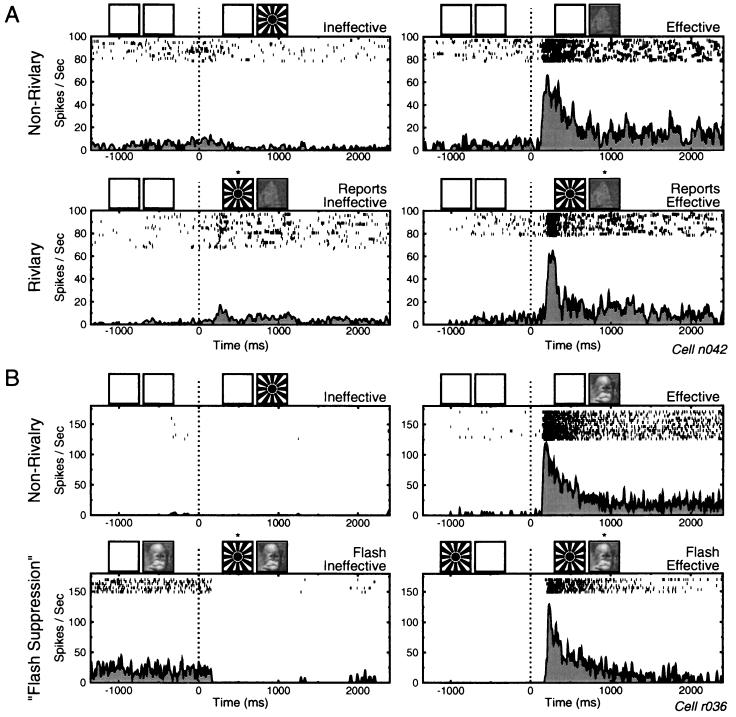Figure 4.
Cell activity sorted by the dominant percept during nonrivalrous and rivalrous conditions. (A Upper) Averaged responses to the monocularly presented ineffective and effective stimuli. Above each graph is a pictorial representation of the visual stimuli presented. At time zero, depicted by the dotted line, the stimulus changed from either a blank screen or a mixed-object (data not shown) to the ineffective (Left) or effective (Right) stimulus. The cell fired only in response to the butterfly pattern. Presentation of the sunburst had little or no effect on the neuron’s activity. (Lower) Response of the cell just before and after the onset of rivalrous stimulation, with the effective stimulus presented to one eye and the ineffective to the other. The data are sorted based the monkey’s perceptual report: trials in which the monkey first reported seeing the ineffective stimulus (Left) and those for which the monkey first reported seeing the effective stimulus (Right). In these conditions, the stimuli presented are identical, but the recorded cell response correlates well with the monkey’s reported percept. (B) Data collected using the suppression paradigm. The nonrivalrous trials (Upper) show that this cell consistently responded to the effective stimulus and not at all to the ineffective stimulus. The flash suppression trials are similar to the rivalry trials shown in A, except that preceding the rivalrous stimulation, either the effective stimulus (Lower Left) or ineffective stimulus (Lower Right) was previously presented monocularly. Rivalry onset, marked by the dotted vertical line, thus consisted of adding either the ineffective or effective stimulus to the rivalrous pair. Following rivalry onset, the monkey’s reported percept consistently switched to the newly presented stimulus, and the previewed stimulus was perceptually suppressed. Using this paradigm, phenomenal suppression was especially effective, and cell activity during the onset of rivalrous stimulation closely mirrored that during the nonrivalrous controls.

